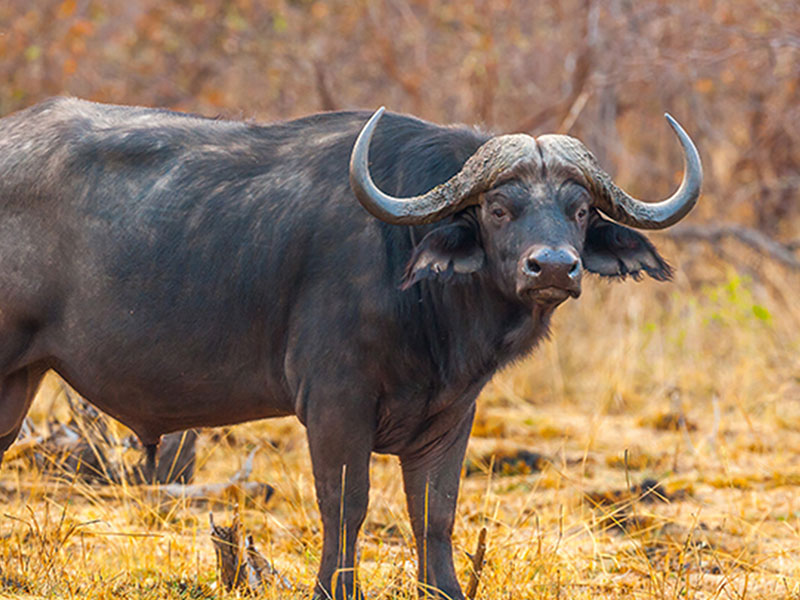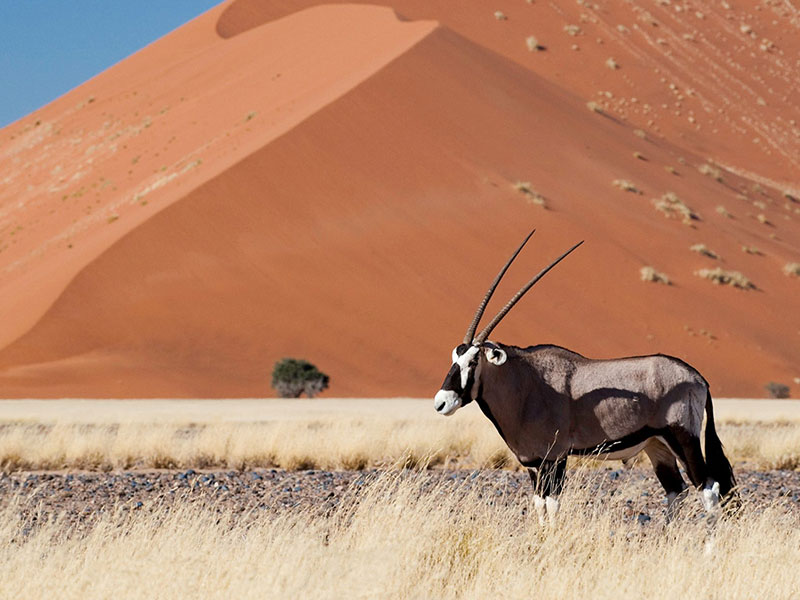Namibia is a dream destination for every lover of wildlife photography.
This South African country is home to an amazing variety of animals, from royal lions to majestic elephants to all kinds of deserted creatures that have mastered survival in one of the roughest landscapes on earth.
If you want to refine your skills in animal photography and take some really impressive shots, Namibia should be at the top of your list.
In this blog, we will cover the most important tips and techniques to ensure that you return home with a catalog of pictures that not only tell a story, but also inspire you to book your next Namibia trip!
Choose the right equipment for the job
While smartphones can take good photos, serious wildlife photography requires more advanced equipment.
To capture remote motifs without disturbing them, a DSLR or mirrorless camera with a good zoom lens is essential. For the animal world of Namibia, a lens with a focal length of at least 300 mm is ideal.
A wide-angle lens is also useful for capturing extensive landscapes such as the giant Etosha salt pans or the dramatic dunes of the Namib Desert, so that you can’t go wrong with a 24-mm or 35mm lens.
And don’t forget to pack additional batteries and memory cards! In the remote wilderness of Namibia, there are many motives to photograph that you should not miss because you run out of electricity or space.
Plan your shots for the best light
In wildlife photography, the right timing is particularly important, especially when it comes to lighting. In Namibia, the golden hours are almost magical shortly after sunrise and before sunset.
The soft light bathes the landscape in golden tones and highlights the textures of the animals’ fur and the subtle patterns in their surroundings. If you photograph in the middle of the day, when the sun is shining most heavily, fluffing, paintings can be created. Therefore, this is the best time of the day to rest a little.
Game drives in the morning are perfect for catching predators such as lions and leopards on the go, while the late afternoon is a good time to watch elephants and giraffes at water holes.
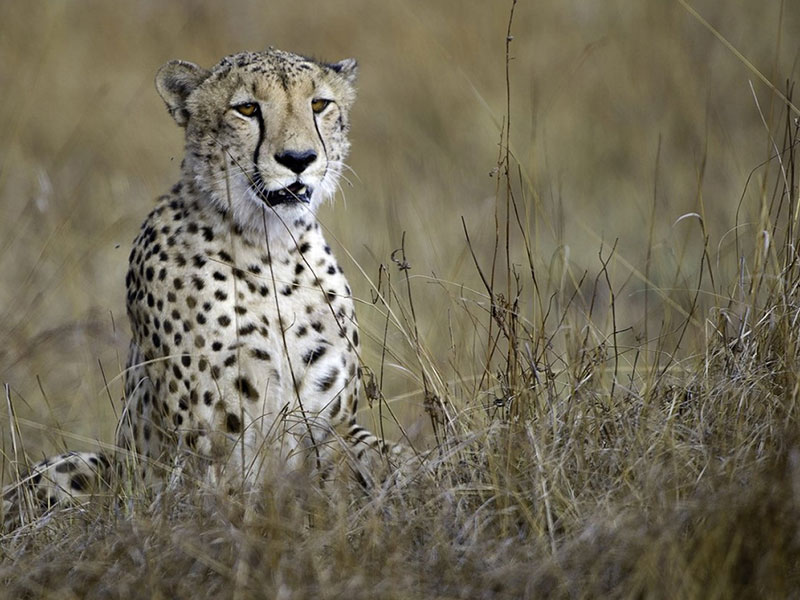
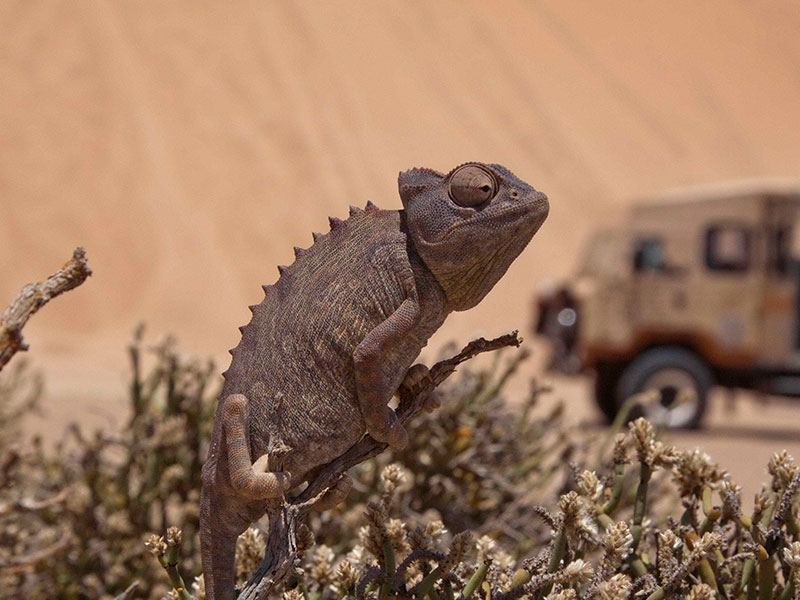
Master the art of patience
In wildlife photography, patience is a skill that needs to be mastered.
Animals move at their own pace and sometimes you have to wait for the perfect moment for hours. Namibia’s national parks such as Etosha and the Skeleton Coast are famous for epic encounters with wildlife, but you have to watch and wait for the perfect photo.
If you are travelling in the wilderness, you should always have your camera ready. Wildlife action can happen quickly, be it a lion pack on the hunt or a desert-adapted orx that runs over the dunes.
Focus on wild animals adapted to the desert
One of Namibia’s most unique features is its animals adapted to the desert.
These creatures have evolved to survive in incredibly dry conditions, making them fascinating motifs for photography. The deserted elephants of Damaraland, for example, have learned to cover long distances in search of water, while the robust oryx antelopes and bucks are often spotted on their way through the dramatic desert dunes.
When taking photos, focus on their interaction with the landscape. The contrast between the animals and the striking, barren terrain of Namibia provides powerful images.
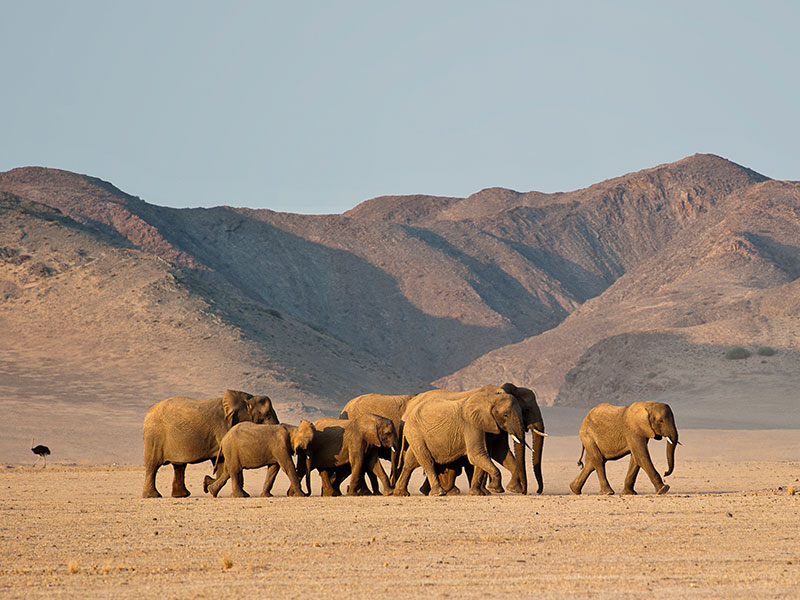
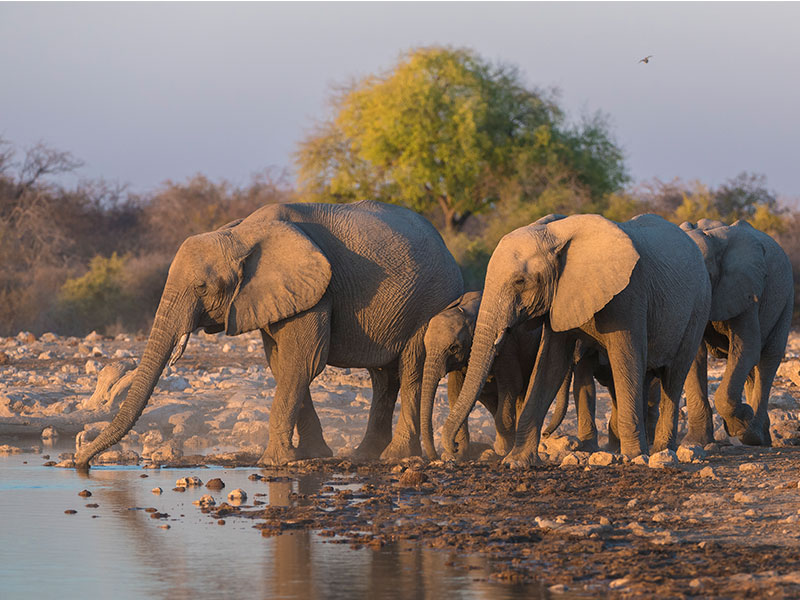
The importance of composition
A good composition can significantly improve your photos and make them exceptional from average.
In Namibia, the landscape offers the photographer the perfect backdrop for dynamic fishing compositions. When photographing wild animals, use the “thirds rule” to create a balance. For example, place a lonely oryx antelope outside the middle of the towering sand dunes as a background.
Do not be afraid to include the other elements of the Namibian landscape in your photographs. The contrast between animals and the surrounding environment helps to tell the story of Namibia’s unique ecosystem.
Now it’s time to book your Namibia photo tour
Namibia offers endless opportunities to capture some of the most breathtaking wildlife in the world. Whether it’s the desert-adapted elephants in Damaraland, the lions of the Etosha Mountains or the immersive beauty of the Skeleton Coast, no matter where you travel, the country is a paradise for every photographer.
With the right equipment, the right techniques and some patience, you can return home with a portfolio that not only impresses, but also serves as a reminder of Namibia’s wild, untamed beauty.
Book a wildlife photo tour through Namibia today and let this extraordinary country become a canvas for your next adventure!
